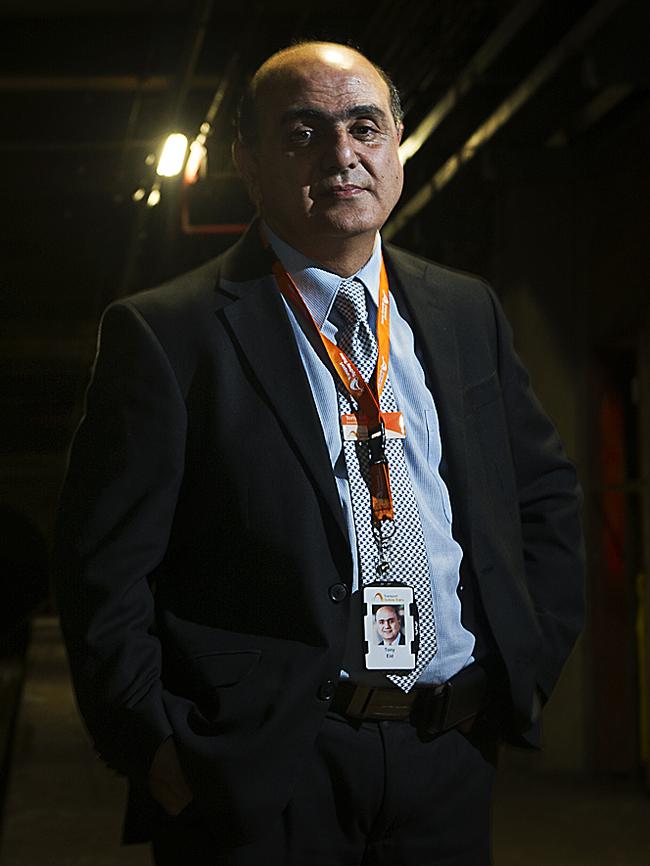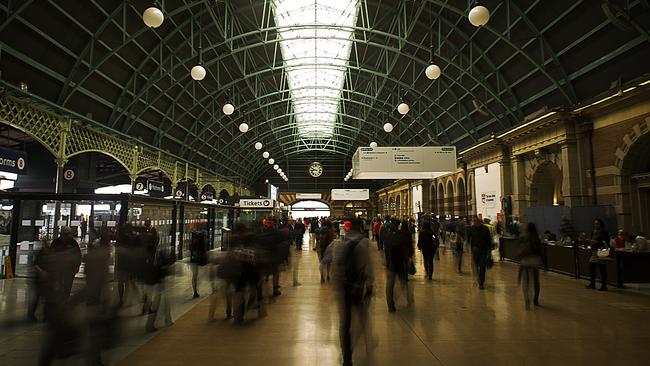OUTSIDE Tony Eid’s office at Sydney trains is a giant “birds eye” view of Sydney’s electric train routes with the Harbour Bridge and the city circle stations easily identifiable in red.
“It is fantastic,” said Mr Eid, Director of Operations at Sydney Trains, “particularly when you realise that this map was drawn in 1915 long before any of this was ever built.”
The name of the draughtsman and visionary sits in pride of place in the top left corner of the map – John Bradfield.
“The vision he had for mapping out the Sydney transport network was remarkable,” said Mr Eid.
“And much of what he foresaw is still keeping Sydneysiders moving today.”
Apart from the Bridge, one of the key elements of Bradfield’s vision in his 1915 rail map was the City Circle. But it took a long time to become reality: Museum and St James Stations were opened in 1926, and Town Hall and Wynyard in 1932.
The City Circle only became a circle with the opening of the station at Circular Quay in 1956.
“It works on so many levels,” said Mr Eid. “The rationale was to have a lot of trains moving through the city without having to stop and turn around at a terminus.”

There are actually two circles, one pumping trains through Town Hall and back to Central and The other moving carriages in the opposite direction through Museum.
“In the near future we are looking to have 20 trains an hour passing through the City Circle, that’s one train every three minutes,” said Mr Eid.
That is a step closer to the aim of a walk up and go, timetable free transport system similar to the London Underground that Mr Eid and the NSW Government is aiming for.
Already under construction is the South West Rail Link from Glenfield to Leppington, which is due to open next year, and the metro style North West Rail Link from Rouse Hill to Chatswood, which is expected to open in 2019.
It is the first phase of the Sydney Rapid Transit Network that will eventually see trains travelling to Bankstown via a proposed second harbour rail crossing.
“This is a very exciting time for the future of Sydney,” said Mr Eid. “The answer for people is not more roads, it is better train networks that can move people quickly from door to door.”
For a long time the car made the Victorian invention of the train seem old fashioned. Its renaissance as the fast and efficient transport of the future is seen as vindication of Bradfield’s vision and as a victory for common sense to lifetime train lovers like Mr Eid.
“I started here as a telephone boy when I was 15 in 1979 and moved on to signal boxes,” said Mr Eid, whose three children grew up spending Christmas and Easter having celebratory lunches at work with their father in the signal box at Epping.
“I always wondered why, on the map, there was a section that showed us coming off at Chatswood. We eventually built that part in the 1990s,” he said, pointing again to the longevity of Bradfield’s vision.
Mr Eid worked his way up through the ranks, delivering the rail solutions for the Sydney Olympics, and on to become a consultant with other rail networks in London, Paris and New York.
“Make no mistake about it, we are a world class city in terms of our rail networks and it is only going to get better. This is a very exciting time for trains in Sydney,” said Mr Eid.
But as excited as he is for the future, Mr Eid has a great love of Sydney’s railway past. Walk with him through Central Station and he will show you the bullet hole in the marble from the 1916 riots. “I won’t let them change it,” he said.
After a lifetime on the railway, he knows everyone by name. It takes quite a while to get down to platforms 26 and 27 – the ghost platforms that sit underneath the concourse and above platforms 24 and 25.
“They were built and never used. The tunnels only go in a few meters at either end,” said Mr Eid.
Workers who ever have to go down there report the sounds of children playing but they stop and
the platform goes icy cold whenever anyone approaches.
“We have thought about using the platforms for various things but it has never worked out,” he said.
The platforms are an anomaly in a modern rail network that is set on moving forward.
“Today we are building on the genius of Bradfield’s vision and moving beyond that,” said Mr Eid.
http://www.dailytelegraph.com.au/news/nsw/photos-fnlmwzlq-1227099707204#embed


Add your comment to this story
To join the conversation, please log in. Don't have an account? Register
Join the conversation, you are commenting as Logout
Here’s what you can expect with tomorrow’s Parramatta weather
As we move into summer what can locals expect tomorrow? We have the latest word from the Weather Bureau.
Here’s what you can expect with tomorrow’s Parramatta weather
As we move into summer what can locals expect tomorrow? We have the latest word from the Weather Bureau.